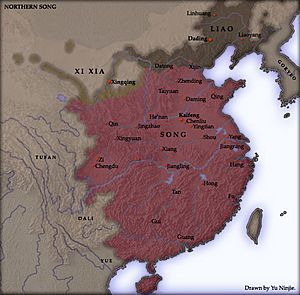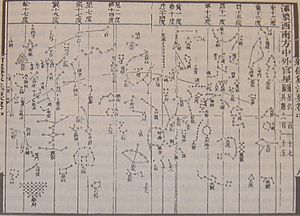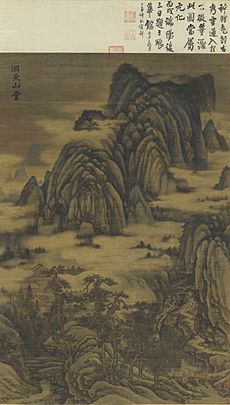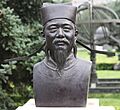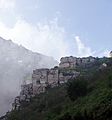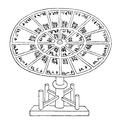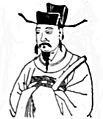Shen Kuo facts for kids
Quick facts for kids
Shen Kuo
沈括 |
|
|---|---|

Bust of Shen at the Beijing Ancient Observatory
|
|
| Born | 1031 |
| Died | 1095 (aged 63–64) Runzhou, Song Empire
|
| Known for | Geomorphology, Climate change, Atmospheric refraction, True north, Retrogradation, Camera obscura, Raised-relief map, fixing the position of the pole star, correcting lunar and solar errors |
| Scientific career | |
| Fields | Agronomy, Astronomy, Archaeology, Anatomy, Antiquarianism, Mathematics, Pharmacology, Medical science, Entomology, Mineralogy, Music, Geomorphology, Sedimentology, Optical engineering, Soil science, Encyclopedism, Geomagnetics, Optics, Hydraulics, Hydraulic engineering, Mechanical engineering, Metallurgy, Metaphysics, Meteorology, Climatology, Cartography, Botany, Zoology, Economics, Finance, Military strategy, Ethnography, Divination, Art criticism, Philosophy, Poetry, Politics, Public Administration |
| Institutions | Hanlin Academy |
| Shen Kuo | |||||||||||||||||||||||||||||
|---|---|---|---|---|---|---|---|---|---|---|---|---|---|---|---|---|---|---|---|---|---|---|---|---|---|---|---|---|---|

"Shen Kuo" in regular Chinese characters
|
|||||||||||||||||||||||||||||
| Chinese | 沈括 | ||||||||||||||||||||||||||||
|
|||||||||||||||||||||||||||||
Shen Kuo (Chinese: 沈括; 1031–1095) was an amazing Chinese scientist and government official during the Song dynasty (960–1279). He was a true polymath, meaning he was an expert in many different subjects. These included mathematics, optics, and how to tell time accurately.
In his government job, Shen Kuo worked as a finance minister, a state inspector, and even led the Bureau of Astronomy. He also served as an academic leader.
Shen Kuo wrote a famous book called Dream Pool Essays (1088). In this book, he was the first to describe the magnetic needle compass. This compass would later be used for navigation. He also discovered the idea of true north, which is different from where a magnetic compass points. This was a huge step for making compasses useful for travel.
With his friend Wei Pu, Shen Kuo planned to map the paths of the Moon and planets. He also improved tools like the armillary sphere and invented a new water clock. Shen Kuo came up with a theory for how land forms (geomorphology). He based this on finding ocean fossils far inland and seeing how soil erosion and silt built up land. He also suggested that climates change over time. He noticed this because he found ancient petrified bamboos in a dry northern area where bamboo could not grow in his time.
Shen Kuo was the first Chinese writer to mention using a drydock to repair boats. He also wrote about the helpful invention of the canal pound lock. He studied the camera obscura (a pinhole camera) and understood how its focal point worked. His writings helped preserve the knowledge of movable type printing, which was invented by Bi Sheng. Shen Kuo also made a raised-relief map and described an ancient crossbow mechanism. This mechanism was like a Jacob's staff, a tool for surveying that wasn't known in Europe until much later.
Shen Kuo wrote other books too, but many of them are now lost. He also wrote poetry. Even though he focused on science, he was interested in divination and strange events, including what sounds like unidentified flying objects.
Contents
Shen Kuo's Life Story
Early Years and Learning
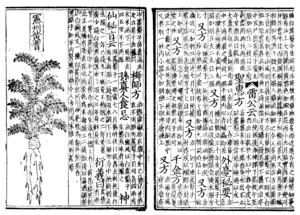
Shen Kuo was born in 1031 in Qiantang, which is now Hangzhou. His father worked in government jobs in the provinces. Shen Kuo's mother was well-educated and taught him and his brother. Since his family wasn't from a famous noble group, Shen Kuo had to work very hard to succeed. He studied diligently to pass the difficult imperial examinations. These tests were required to become a government official.
As a child, Shen's family moved a lot, traveling through Sichuan province and to the seaport of Xiamen. This allowed Shen Kuo to see many different parts of China and learn about the land. He also watched his father work in government, which taught him about managing problems. Because he was often sick as a child, Shen Kuo became very curious about medicine.
Shen Kuo's father died when Shen was 21. Following tradition, Shen Kuo spent three years in mourning. In 1054, he started working in small local government jobs. Even early on, he showed great skill in planning and organizing. For example, he designed a system to drain a swampland, turning a huge area into useful farmland. He understood that controlling silt with sluice gates was key to making the land fertile.
Working for the Government

In 1063, Shen Kuo passed the tough imperial examinations with high marks. While working in Yangzhou, his talent was noticed by a high-ranking official named Zhang Chu. Zhang recommended Shen for a job in the central government's financial department. Shen Kuo later married Zhang's daughter.
Shen Kuo became an important government official. He was an ambassador to other dynasties, a military leader, and a director of water projects. By 1072, he was in charge of the Bureau of Astronomy. There, he worked on improving the Chinese calendar with his colleague Wei Pu. Because of his skills in money matters, he was made the Finance Commissioner.
Shen Kuo also inspected the empire's granary system. He looked into problems like illegal taxes and poor disaster help. In 1073, the Emperor asked Shen to visit the famous poet Su Shi. Shen copied some of Su's poems and showed them to the Emperor, saying they were critical of the government. This led to a famous court case against Su Shi. The Emperor trusted Shen Kuo a lot and gave him an honorary title.

Shen Kuo was a favorite of Chancellor Wang Anshi, who led a group of reformers. Shen had known Wang Anshi before, as Wang had written a tribute for Shen's father. Shen impressed Wang with his skills. In 1072, Shen helped manage a project to dredge a canal, showing how valuable the collected silt was as fertilizer.
In 1075, Shen Kuo was sent as an envoy to the Khitan Liao dynasty. The Khitans were trying to take more land. Shen Kuo used old diplomatic records to show the Khitan ruler that the Song dynasty was right about its borders. This was a great success for Song China.
Wang Anshi's reforms also included military changes. This meant raising local armies and controlling gunpowder production. In 1080, Shen Kuo became a military officer in Yanzhou. In 1081, he successfully defended Song territory and captured several towns from the Western Xia. The Emperor rewarded Shen Kuo greatly for his bravery. However, another military officer made bad decisions, leading to a huge loss of soldiers. Shen Kuo was still able to defend his own forts.
Retirement and Later Life

After the military disaster, a new Chancellor blamed Shen Kuo. Shen lost his government job and was placed under house arrest for six years. During this time, he focused on his studies and writing. He created two geographical atlases for the government. Because of this work, his house arrest was lifted, and he could live where he chose.
In his retirement, Shen Kuo enjoyed hobbies like Zen Buddhist meditation, calligraphy, painting, tea drinking, and writing poetry.
Shen Kuo had two wives. His second wife, Lady Zhang, was known to be difficult. After she died, Shen Kuo became very sad and passed away a year later.
In the 1070s, Shen bought a beautiful garden estate near Zhenjiang. He named it "Dream Brook" ("Mengxi"). He moved there permanently in 1088. In the same year, he finished his most important book, Dream Pool Essays, naming it after his estate. Shen Kuo spent his last years there, enjoying his leisure and studies, until he died in 1095.
Shen Kuo's Amazing Discoveries
Maps and Geography
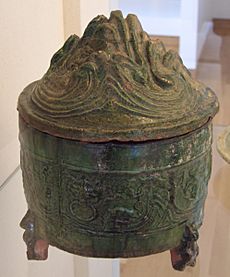
Shen Kuo was a skilled mapmaker. His largest atlas had 23 maps of China and other regions, all drawn to the same scale. He also created a raised-relief map using materials like sawdust, wood, beeswax, and wheat paste. This was like a 3D model of the land.
Medicine and Plants
Shen Kuo wrote about the challenges of diagnosing illnesses and choosing the right medicines. He was very careful about identifying and preparing different medicinal herbs. He wrote about when to gather plants, their ripening times, and which parts to use. For farmed herbs, he wrote about planting and fertilizing. He described hundreds of plants, crops, animals, and minerals found in China. For example, he noted that the mineral orpiment was used to quickly erase writing errors.
Building and Engineering
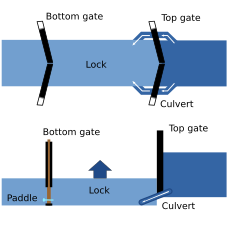
Shen Kuo's writings are the only source for when the drydock was first used in China. He wrote that around 1068–1077, an official named Huang Huaixin designed the first Chinese drydock. This allowed large boats to be lifted out of the water for repairs. Shen also wrote about the new pound lock system for canals. He said it saved a lot of labor and money, and allowed much larger boats to travel through canals.
Shen Kuo also preserved the work of the architect Yu Hao. Yu Hao designed a famous wooden pagoda. Shen's writings show that by the 10th century, there was a system for building proportions in China.
Human Body Studies
Shen Kuo was interested in human anatomy. He corrected an old Chinese idea that the throat had three valves. He explained that the larynx was for air and the esophagus was a simple tube for food. His ideas were later supported by dissections of human bodies.
Math Skills
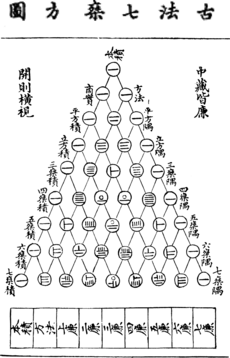
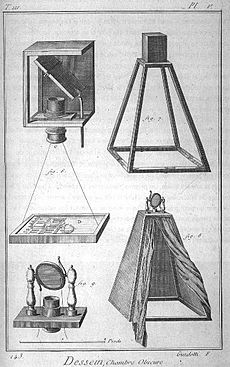
Shen Kuo was a master of mathematics. He solved complex problems in geometry and trigonometry. He developed a "technique of small increments" which helped with problems involving stacking objects. His work on the lengths of arcs helped lay the groundwork for spherical trigonometry. He also simplified how to use counting rods, a tool for calculations.
Shen wrote about math problems he faced while working for the government. These included calculating land tax and managing currency. He even calculated the space needed for military formations and how long a military campaign could last based on food supplies.
Light and Optics
Shen Kuo experimented with the pinhole camera and burning mirror. He was the first to notice the connection between the focal point, the burning point, and the pinhole in optics. He compared how images are inverted in a pinhole camera to an oarlock and a waisted drum. He also noted that images in a concave mirror are inverted.
The Magnetic Compass

Before Shen Kuo, the Chinese used a "south-pointing chariot" for direction. In 1044, a book described using magnetized iron fish floating in water for direction.
However, Shen Kuo was the first to clearly write about using a magnetic compass for navigation. He explained how to magnetize steel needles by rubbing them with lodestone. He said the best way to use them was suspended, and he noted that the magnetic needle pointed south or north. Importantly, Shen Kuo discovered that the magnetic needle didn't point exactly to true south. He wrote that it was "always displaced slightly east."
Shen Kuo suggested using a 24-point compass instead of the older 8-point one. This was likely because he found a more accurate astronomical meridian. A book published in 1119 mentioned the compass being used for sea travel, which means it was likely already in use during Shen Kuo's time.
Studying Ancient Objects
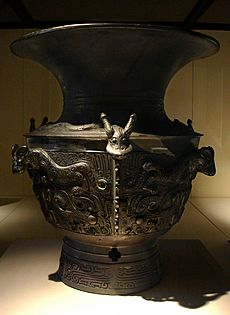
Many people in Shen Kuo's time collected old artworks. But Shen Kuo was more interested in how ancient items were made and what they were used for. He believed in using real evidence from archaeological digs. He disagreed with people who recreated ancient objects based only on imagination. Shen Kuo thought that common people and artisans, not just "sages," made these items.
Shen Kuo used ancient mirrors for his optics experiments. He studied old weapons, describing the aiming devices on crossbows and how ancient swords were made. He also suggested how to hang an ancient bell.
After finding an old crossbow device, Shen Kuo realized its sighting mechanism could measure the height of a distant mountain. This was similar to a tool called a Jacob's staff, which wasn't known in Europe until much later.
Earth's Changing Surface
Shen Kuo developed a theory about how land forms (geomorphology). He saw fossil shells in a mountain cliff far from the ocean. He thought the land was shaped by soil erosion, uplift, and silt building up. He believed that continents formed over a very long time. While visiting the Taihang Mountains, he saw layers of shells and rocks in a cliff. He suggested this cliff was once an ancient seashore that had moved hundreds of miles east.
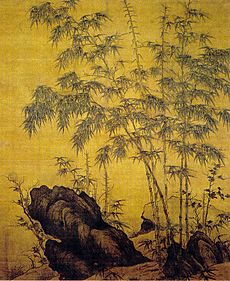
Shen also noticed petrified bamboos underground in a dry northern area where bamboo didn't grow. He guessed that the climate there must have been different long ago. He concluded that the climate of Yanzhou must have been damp and gloomy in ancient times for bamboo to grow.
Weather Observations
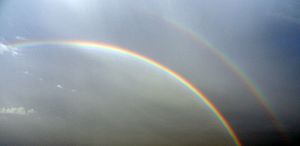
Shen Kuo made important observations about weather. He was the first in East Asia to describe tornadoes.
He also explained that rainbows are formed by the sun's light shining through rain. He correctly guessed that sunlight bends (refracts) before reaching the Earth. This means we see the sun in a slightly different position than it actually is.
Stars, Planets, and Instruments
As the head of the Bureau of Astronomy, Shen Kuo studied the stars and improved astronomical tools. He made better designs for the gnomon, armillary sphere, and clepsydra (water clock). He also improved the sighting tube to observe the pole star more accurately. He noticed that the pole star had shifted its position over time.
Shen Kuo also explained solar and lunar eclipses. He said that the Sun and Moon are spherical (like balls), not flat. He compared the Moon to a silver ball that reflects light from the Sun. He explained that the Moon appears full when the Sun's light hits it directly.

Shen Kuo and his colleague Wei Pu planned to map the exact movements of planets and the Moon. They wanted to record observations three times a night for five years. Other astronomers at court didn't like their work, but Shen and Wei proved their findings were correct.
Movable Type Printing

Shen Kuo wrote that during the Qingli period (1041–1048), a common artisan named Bi Sheng invented ceramic movable type printing. This was a revolutionary invention. Shen Kuo noted that it was slow for printing a few copies but very fast for hundreds or thousands.
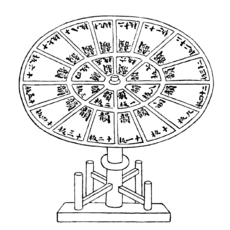
Some books from the late Song dynasty still exist that were printed using movable type. Later, Wang Zhen improved wooden movable type in the late 1200s. He made it faster to arrange the type using mechanical devices and revolving tables.
Even with these advances, movable type printing didn't become as popular in East Asia as woodblock printing. This was because the Chinese language has so many characters. Later, the European printing press became the standard in China, but woodblock printing is still used today.
Other Scientific Achievements
Shen Kuo described how natural predator insects help control pests that could harm crops.
He also wrote about improvements in metallurgy (working with metals). He described a method for refining iron, which was similar to a later process called the Bessemer process. Shen was concerned about deforestation caused by the iron industry. He suggested using petroleum (oil) as an alternative fuel. He even invented a new, more durable writing ink using soot from burned petroleum.
Shen Kuo's Ideas and Beliefs
Philosophy and Thoughts
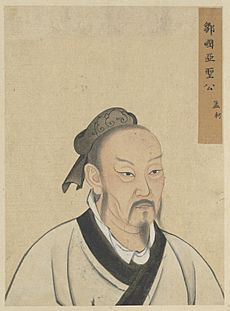
Shen Kuo was interested in Daoist ideas, which suggested that the universe had secrets beyond what science could fully explain. He believed that while science could show parts of the universe, it couldn't reveal everything. Shen Kuo also believed in destiny and predicting the future, but he warned against thinking that everything in life was already decided.
He wrote about the importance of choosing a true path, influenced by the philosopher Mencius. Shen Kuo also wrote about Buddhist meditation.
Art Appreciation
As an art critic, Shen Kuo had opinions on paintings. He criticized some painters for not showing buildings realistically. He praised the artist Dong Yuan, saying that his landscape paintings looked grand and realistic from a distance, even if they seemed rough up close. Shen Kuo's writings are the earliest known mention of the Jiangnan style of painting. He also admired the painter Wang Wei for his creativity.
Shen Kuo's Books
Much of Shen Kuo's writing was lost or changed after his death due to political reasons. Only six of his books remain, and four of them have been changed.
Dream Pool Essays
Shen Kuo's Dream Pool Essays has about 507 short essays. It covers many subjects in nature, science, and everyday life. The title means "Dream Brook Brush Talks," referring to his home where he wrote it. He said he called it "Brush Talks" because he only had his writing brush and ink to talk with.
The book originally had 30 chapters, but later it was edited into 26 chapters.
Other Writings

Besides Dream Pool Essays, Shen Kuo wrote other books. He wrote a report on his calendar reforms, but this book is now lost. During his retirement, he put together a collection of Good medicinal formulas. This was later combined with a similar collection by the famous poet Su Shi.
Shen Kuo also wrote Record of longings forgotten at Dream Brook. This book was about rural life and people in mountain regions. Only parts of it survive, describing farming tools. His collected poems and writings were put into a book called Collected Literary Works of [the Viscount of] Changxing, but only one chapter of it remains today. Shen Kuo also wrote a travel guide called Register of What Not to Forget, which gave advice on travel.
Shen Kuo's Lasting Impact

Historians praise Shen Kuo as one of the greatest scientific minds in Chinese history. Some even call his thinking "amazingly modern."
However, some scholars note that Shen Kuo's writings are not always organized. They are a "scattered set" of observations rather than a single, clear scientific theory. This was a common issue in early Chinese science.
Burial and Honors
Shen Kuo was buried in a tomb in Yuhang District, Hangzhou. His tomb was destroyed, but its location was found in 1983 and restored in 2001. The restored tomb has parts of the original brick structure and old glass items.
His former home, the "Mengxi" garden estate in Zhenjiang, was also restored in 1985. It has a statue of Shen Kuo and copies of his Dream Pool Essays. There's also a museum gallery showing his many achievements.
In 1964, a new asteroid was discovered and named 2027 Shen Guo in his honor.
Images for kids
-
The Bencao on traditional Chinese medicine; printed with woodblock printing press in 1249; Shen grew ill often as a child, and so developed an interest in medicinal cures.
-
Shen's confidant, Emperor Shenzong of Song (r. 1067–1085), a Song era portrait painting.
-
Portrait painting of Wang Anshi.
-
Boundaries of the Northern Song dynasty, the Liao dynasty, and the Western Xia.
-
Painting of a Buddhist luohan, by Liu Songnian, painted in 1207; Shen Kuo not only listed literati painting as one of his cherished pastimes, but also Buddhist meditation.
-
A Han dynasty incense burner, showing artificial mountains as a lid decoration, which may have influenced the invention.
-
A side view of a pound lock for canals, invented in China in the 10th century and described by Shen.
-
Yang Hui triangle (Pascal's triangle) using rod numerals, from a book by mathematician Zhu Shijie, 1303
-
An 18th-century diagram of camera obscura
-
A Han dynasty (202 BC–220 AD) ladle-and-basin lodestone south-pointing compass, used by ancient Chinese geomancers, but not for navigation.
-
Bronzeware from the Shang dynasty (1600–1046 BC); Song era antiquarians and archeologists in search of antiques for reviving ancient rituals claimed to have found bronzewares dated as far back as the Shang era, which contained written inscriptions.
-
View of the Taihang Mountains, where Shen Kuo had his epiphany about geomorphology.
-
Bamboo and rocks by Li Kan (1244–1320); using evidence of fossilized bamboo within China's dry northwestern climate zone, Shen Kuo hypothesized that climates naturally shifted geographically over time.
-
Shen accurately hypothesized that rainbows were caused by sunlight passing through rain droplets.
-
The original diagram of Su Song's book of 1092 showing the inner workings of his clocktower; a mechanically rotated armillary sphere crowns the top.
-
The Chinese Diamond Sutra, the oldest known printed book in world history (868), using woodblock printing.
-
A revolving table typecase with individual movable type characters arranged primarily by rhyming scheme, from Wang Zhen's book of agriculture published in 1313.
-
Poet and statesman Su Shi, whose pharmaceutical work was combined with Shen Kuo's in 1126, in a Yuan dynasty portrait by Zhao Mengfu.
-
Ideas of the philosopher Mencius deeply influenced Shen.
-
A sketch of Shen Kuo by an anonymous artist of the Qing dynasty, 18th century
See also
 In Spanish: Shen Kuo para niños
In Spanish: Shen Kuo para niños


